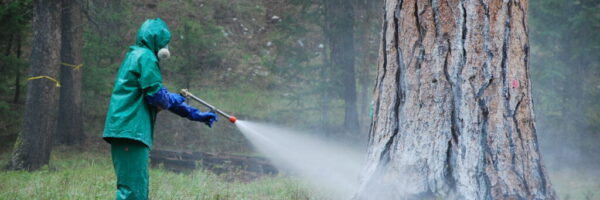
Food giants graded a “D” on sustainable farming practices
By Shannon Kelleher
Major food corporations are failing to effectively support farming practices that protect human and environmental health, according to an assessment of 20 companies released Thursday by a corporate watchdog group.

Cancer risk doubles for Iowa, NC pesticide applicators who used carbaryl, study finds
By Brian Bienkowski
Pesticide applicators in North Carolina and Iowa who sprayed the insecticide carbaryl often during their career have a higher risk of getting stomach, esophageal, tongue and prostate cancers, according to new research led by the National Cancer Institute (NCI).

With trial approaching, Syngenta settles paraquat lawsuit brought by Parkinson’s patient
By Carey Gillam
Less than a month ahead of what would have been the first US trial over allegations that a popular weedkiller made by agrochemical giant Syngenta causes Parkinson’s disease, the parties have agreed to settle the case. With a looming Aug. 4 Philadelphia trial date, the case of Douglas Nemeth v. Syngenta, which previously was delayed multiple times, was being closely watched as the two sides battled over evidence to be presented and expert witnesses.

Postcard from California: Plastics ‘recycling’ – out of sight, out of mind
By Bill Walker
Last year California shipped more than 156 million pounds of plastic waste to poor countries, with almost three-fourths sent to Mexico and another 44 million pounds sent to developing nations in Asia, Latin America, and Africa. That’s the reality behind the blue recycling bins Californians fill with plastic waste for curbside pickup. We may think we’re recycling, but we’re really sending much of our waste out of sight, out of mind.

“It doesn’t have to be this way” – Scientists confirm Iowa farm pollution is creating dire health risks
By Carey Gillam
Agricultural operations across Iowa are a leading cause of significant water pollution problems in the state, posing dire risks to public and environmental health, according to a new scientific report that is sparking heated debate in the key US farm state.

Q&A: Current policies “not enough” to ensure safe water in key US farm state
By Carey Gillam
On Tuesday, a team of 16 scientists released the results of a controversial two-year study of pollution patterns in key waterways in Iowa. The New Lede talked with Claire Hruby, one of the scientific advisors on the report, about the new report. Hruby is assistant professor, Environmental Science and Sustainability College of Arts and Sciences at Drake University in Iowa.

As nitrate levels soar in Iowa, new research underscores risks for babies
By Carey Gillam
New research out of Iowa adds to a wide body of evidence showing that when pregnant women are exposed to nitrates in drinking water, it raises the risks of problematic birth outcomes, including low birth weights and pre-term birth. The study, published June 25 in PLOS Water, found that the risks persist even when exposures are lower than the regulatory standard for allowable levels.

Children are paying the costs for Iowa’s “drinking water crisis”
Iowa is currently facing an unprecedented drinking water crisis. Recent reports indicate alarming nitrate levels in the Raccoon River; so high that city officials enacted emergency measures such as lawn water bans, to ensure water treatment facilities could comply with regulatory standards for safe drinking water. Unfortunately, at least for pregnant women, any level of nitrate in drinking water appears unsafe.

Clothing dye raises diabetes risk in pregnant women
By Brian Bienkowski
Pregnant women exposed to a harmful clothing dye have a higher risk for gestational diabetes when they are carrying a male fetus, according to a new study.

“PFAS are everywhere” – Fears growing about PFAS in pesticides
By Meg Wilcox
Vicki Blazer has studied the health of the smallmouth bass in the Chesapeake Bay watershed for more than 20 years. As a research fishery biologist for the United States Geological Survey (USGS), she keeps a close eye on pollutants and other environmental factors that could be causing diseases and die-offs plaguing the popular sportfish.
Increasingly, her findings – and her fears – are focused on per- and polyfluoroalkyl substances (PFAS) and how pesticides containing types of PFAS chemicals appear to be accumulating in the fish.
 EWG
EWG